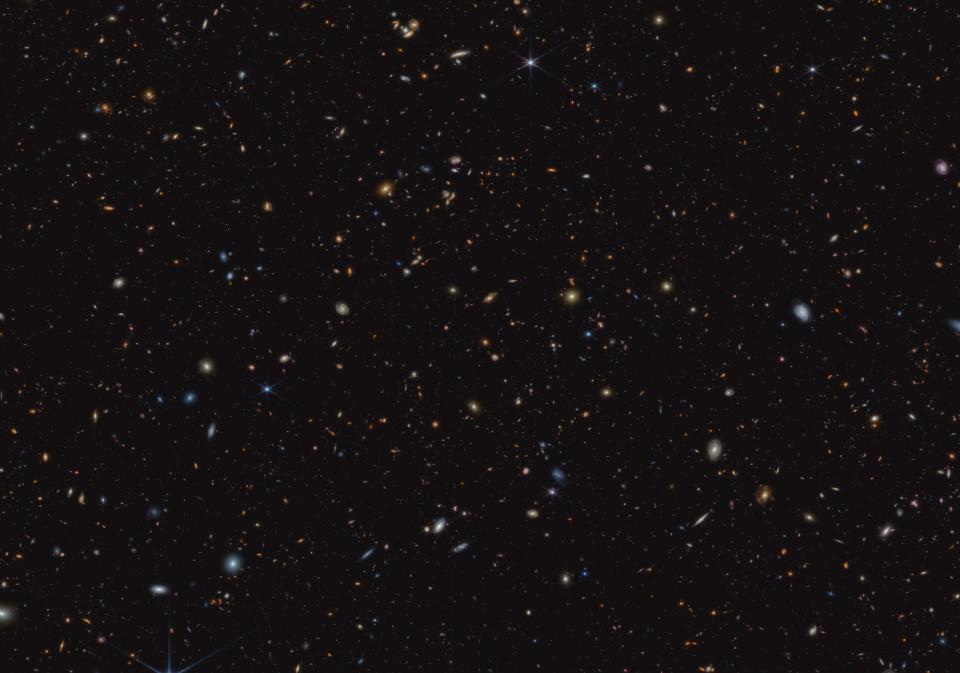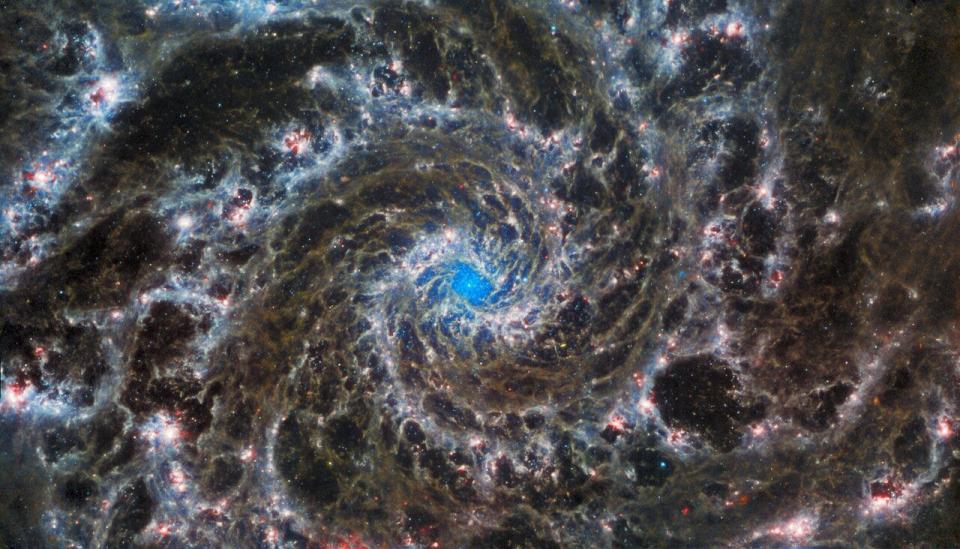New James Webb Space Telescope image shows 45,000 galaxies in unprecedented detail

The James Webb Space Telescope released a recent image that contains 45,000 galaxies.
About 700 of those galaxies are new discoveries and some of the youngest ever observed.
The new galaxies are helping scientists unveil the secrets of our early universe like never before.
If you had a lot of time on your hands, you could count 45,000 galaxies in this new photo from the James Webb Space Telescope.
What you're seeing here isn't some random patch of space.
It's actually a very famous region called the Great Observatories Origins Deep Survey, or GOODS. Astronomers who want to spy on the earliest stages of our universe come here to look.
Scientists have been studying GOODS for years with various instruments, including the Hubble Space Telescope, Chandra X-ray Observatory, and Spitzer Space Telescope, to name just a few.
But JWST is by far the most powerful telescope to turn its sights on GOODS. And the results show it. This recent image from Webb offers astronomers an unprecedented, detailed look back in time.
"Previously, the earliest galaxies we could see just looked like little smudges," astronomer Kevin Hainline of the University of Arizona said in a statement. "Now, we can see that some of them are actually extended objects with visible structure."
And JWST didn't stop there.
James Webb Space Telescope discovers 100s of new galaxies

JWST also discovered about 700 new galaxies in GOODS. What's more, these never-before-seen galaxies are some of the youngest ever observed, dating back to between 370 million and 650 million years after the Big Bang.
"The sheer number of these galaxies was far beyond predictions from observations made before Webb's launch," the Space Telescope Science Institute said in a statement.
With hundreds more galaxies to study in unprecedented detail, thanks to JWST, astronomers are learning that galaxies in our early universe were more turbulent than previously thought.
In particular, by studying the light signatures of these young galaxies, astronomers spotted something they didn't expect: strong emission lines.
"Almost every single galaxy that we are finding shows these unusually strong emission line signatures indicating intense recent star formation," Endsley said in a statement. "These early galaxies were very good at creating hot, massive stars."
Ultimately, the results will help astronomers solve a larger mystery of our early universe called the Epoch of Reionization.
What caused the Epoch of Reionization?

This critical period, which occurred over 13 billion years ago, is when our universe became transparent, enabling us to see the surrounding cosmos as it is today.
Before the Epoch of Reionization, the gas between galaxies was largely opaque, researchers have found. Therefore, astronomers can't look past this point in time because their view is essentially blocked.
What triggered this drastic change is unclear. Some have suggested supermassive black holes are to credit.
But these new results from JWST are indicating the burst of hot, massive star formation in young galaxies could have been a key driver.
Webb's observation of GOODs is part of its JWST Advanced Deep Extragalactic Survey, aka JADES.
JADES is one of the space telescope's largest observing programs, and the data is still coming in.
Read the original article on Business Insider

 Yahoo Sports
Yahoo Sports 